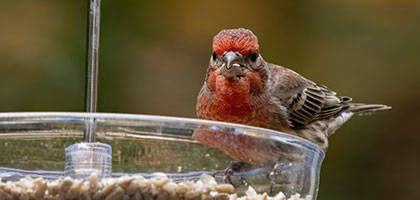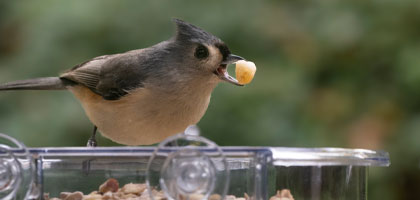Bird watching can be a rewarding hobby. It brings us closer to nature and provides a sense of tranquility.
But how do you attract a variety of birds to your feeder?
This guide will provide practical advice on how to make your bird feeder a hotspot for feathered friends. We'll delve into the types of bird food and feeders that appeal to different species.
We'll also discuss the importance of location, cleanliness, and safety in attracting and keeping birds.
Whether you're a seasoned bird enthusiast or a beginner, this guide will help you create an inviting environment for birds. Let's get started.
Understanding Bird Preferences
Birds are selective eaters with diverse preferences. Some birds prefer seeds, while others are drawn to fruits and nuts. Observing these preferences helps you choose the right food.
Different species are attracted to specific feeder types. For instance, finches favor tube feeders, while cardinals might prefer platform feeders. Knowing the habits and preferences of local birds will guide your choices and increase your chances of attracting a variety of birds to your feeder. Understanding these nuances is the key to success in bird feeding.
Choosing the Right Location
Selecting the right spot for your bird feeder is crucial. A well-chosen location can attract more birds while keeping them safe. Position the feeder in a quiet area away from busy traffic.
Place the feeder near trees or shrubs, which provide shelter and safety for birds. Avoid overly exposed areas to prevent making birds easy targets for predators. Ensure the feeder is also visible from indoors, so you can enjoy watching the birds' visits. Balancing accessibility and safety will make your feeder a popular destination.
Variety of Feeders for Different Birds
Having diverse feeders can attract a wider range of bird species. Different birds have unique preferences, and offering variety helps cater to these needs. Providing a mix of feeder types ensures you attract both seed-eaters and insect-eaters alike.
Platform feeders are versatile and attract a wide range of bird types. These feeders are ideal for larger birds like doves and cardinals. House or hopper feeders protect seeds from weather, making them suitable for all seasons.
Tube feeders are excellent for small birds such as finches and chickadees. They limit access to larger birds, ensuring smaller species have space to feed. Suet feeders are perfect for birds that need high-energy foods, especially during cold months.
Nyjer or thistle feeders cater to finch species that love tiny seeds. Each feeder type serves a specific purpose, creating a welcome environment for many bird varieties. Providing a variety of feeders optimizes your chances of attracting diverse birds to your garden.
Selecting the Best Bird Food
Choosing the right food is key to attracting different bird species. Different birds have specific dietary needs, and catering to these can greatly enhance your feeder's appeal. Offering a mix of bird foods will draw various species to your backyard.
When selecting bird seed, variety matters. Black oil sunflower seeds are popular and attract a broad range of species. Seeds such as millet and safflower cater to different bird preferences.
High-energy foods like suet provide essential nutrients during colder months. Suet is favored by woodpeckers, nuthatches, and starlings. Providing such foods helps birds maintain energy in harsh weather.
Nectar, fruits, and nuts also enhance a bird-friendly environment. Hummingbirds love nectar feeders, while fruits attract orioles and tanagers. Nuts are excellent for jays and woodpeckers. Offering this range ensures you meet the diverse tastes and needs of visiting birds.
Importance of Fresh Water
A consistent supply of fresh water is crucial for attracting birds to your feeder. Birds need water for drinking and bathing, which helps them maintain their feathers in top condition. A clean birdbath can become just as popular as a well-stocked feeder.
Place your birdbath in a quiet, safe location away from predators. Keeping the water clean will encourage birds to visit regularly. Heated birdbaths are helpful in winter, ensuring that water remains accessible when natural sources freeze over.
Keeping Feeders Clean and Safe
Clean bird feeders are essential for preventing the spread of diseases among visiting birds. Regularly empty and wash your feeders with a mild soap solution, ensuring thorough rinsing before refilling with fresh bird food. Clean feeders also keep pests at bay.
Inspect feeders for damage and replace any broken parts promptly. Damaged feeders may have sharp edges that can injure birds. A clean feeder is more inviting to birds, encouraging them to return to your yard. Maintaining a safe environment benefits both the birds and the overall ecosystem of your yard.
Protecting Feeders from Predators and Pests
Protecting your bird feeders from predators like squirrels and raccoons is vital. Consider using baffles above and below the feeders to deter these crafty animals. Metal or plastic baffles work best in keeping unwanted guests at bay.
Install feeders on poles and keep them away from branches that predators can climb. Remember to store bird seed in secure containers to prevent rodent problems. By managing pests effectively, you ensure a safer feeding environment for your feathered visitors.
Creating a Bird-Friendly Habitat
Crafting a welcoming habitat attracts more birds to your yard. Native plants offer natural food sources and habitat. They also attract insects, a vital protein source for birds. Consider incorporating a variety of local plants for a rich ecosystem.
Birds seek safe places for resting and nesting. Provide dense shrubs or small trees for shelter. Ensure the availability of nesting sites by adding birdhouses or leaving dead trees standing when safe. A bird-friendly habitat combines food, shelter, and protection, encouraging a diverse array of bird species to visit and thrive.
- Native plants and trees
- Shelter and nesting sites
Seasonal Considerations and Feeding Habits
Bird feeding habits change with the seasons. In spring and summer, birds often seek protein-rich foods like insects. During these warmer months, providing seeds and mealworms can attract more birds.
In contrast, autumn and winter bring a higher demand for high-energy foods. Offering suet and nuts can help birds maintain their energy in colder weather. It's crucial to adapt your bird feeding strategy with the seasons to meet changing nutritional needs and ensure a steady presence of birds at your feeders.
Engaging with the Birdwatching Community
Connecting with local birdwatching groups can enrich your bird-feeding experience. Sharing observations and tips enhances your knowledge and can provide valuable insights. These communities often host events and activities that can deepen your understanding of bird behaviors and feeding practices, helping you attract a wider variety of birds.
Conclusion: Patience and Consistency
Attracting birds requires patience and dedication. By consistently providing fresh bird food, maintaining clean bird feeders, and creating a welcoming environment, you will soon see an increase in bird visitors. Remember, a little patience goes a long way when it comes to enjoying the beauty of birds in your yard.






